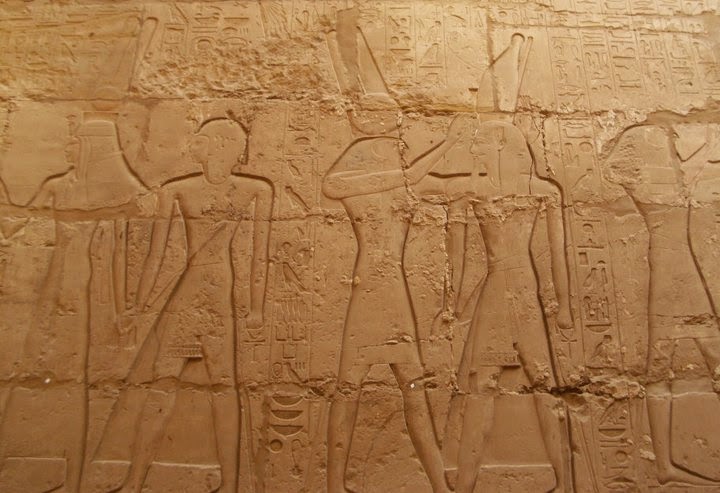THE TEMPLES OF KARNAK
The trip to
Luxor could not have been complete without a visit to the many temples of Luxor.
The Temples of Karnak are the largest ancient temple in the world. The Karnak complex is a complex of an open air museum,
temples, pylons, intact and dismantled obelisks and monuments. All parts are
not open to the general public. Signs of graffiti and vandalism by Napolean
Bonaparte, the Italians, Coptic Christians and Arabs still linger. In the main
hall stands high the statue of Ramses II – his ego frozen into stone.
 |
| The Temple of Karnak in Luxor. Click by Danish Henry |
 |
| The Temple of Karnak. Click by Manthan Mehta |
 |
| Pictorial representations of interactions between the Kings and the Gods at the Temples of Karnak. Click by Danish Henry |
The Kings were
bizarre yet interesting, unreasonable yet logical, overwhelmingly wealthy with
no moral values, obsessed with symbolism and intoxicated with
self-glorification with utter disregard for human rights.
The Ancient Egyptians
were not just another group of people with an all-powerful King. They left a
lasting legacy in many fields of life. They had the management skills to manage
a workforce of thousands, were bench-markers in engineers who made attempts
(though failed ones) at building a primitive type of a dam at the Nile and established an extensive irrigation system to
benefit from the predictable flooding. Also, they were architectural wizards
who build the iconic pyramids and imposing temples at Luxor







